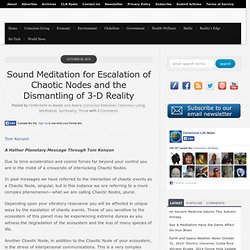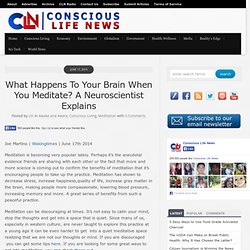

Sound Meditation for Escalation of Chaotic Nodes and the Dismantling of 3-D Reality. Tom Kenyon A Hathor Planetary Message Through Tom Kenyon Due to time-acceleration and cosmic forces far beyond your control you are in the midst of a crescendo of interlocking Chaotic Nodes.

In past messages we have referred to the interaction of chaotic events as a Chaotic Node, singular, but in this instance we are referring to a more complex phenomenon—what we are calling Chaotic Nodes, plural. Depending upon your vibratory resonance you will be affected in unique ways by the escalation of chaotic events. Those of you sensitive to the ecosystem of this planet may be experiencing extreme duress as you witness the degradation of the ecosystem and the loss of many species of life. Another Chaotic Node, in addition to the Chaotic Node of your ecosystem, is the stress of interpersonal communications. There is a growing sense among many that something is terribly wrong, and along with this is the feeling that there is no solution. It is not an either/or proposition. The Elevatron Tom Kenyon. Global Consciousness Project.
What Happens To Your Brain When You Meditate? A Neuroscientist Explains. Joe Martino | Wakingtimes | June 17th 2014 Meditation is becoming very popular lately.

Perhaps it’s the anecdotal evidence friends are sharing with each other or the fact that more and more science is coming out to confirm the benefits of meditation that it’s encouraging people to take up the practice. Meditation has shown to decrease stress, increase happiness,quality of life, increase gray matter in the brain, making people more compassionate, lowering blood pressure, increasing memory and more. A great series of benefits from such a peaceful practice. Meditation can be discouraging at times. What Happens When You Meditate? A group of Harvard neuroscientists came together to study the benefits of meditation on the brain and how it affects mindfulness. The subjects were given a 45 minute guided mindfulness exercise to be used daily and they were encouraged to do various daily activities with as much mindfulness as possible.
Societal Benefits For The Bigger Picture. Fire in the Belly: Manipura Chakra, Turning Power Into Peace. Christina Sarich, Contributing WriterWaking Times The Famous psychologist, Carl Jung, once said that Manipura chakra is where we burn through our passions and desires in order to become a completely realized individual.

The Yoga Technique to Increase Concentration of Mind. The science of Yoga has cure for almost all types of diseases except some major chronic diseases like cancer, HIV aids etc.

I have myself undergone three yoga camps to learn most of the yoga practices at Haridwar in India and am licensed to teach pranayama as yoga instructor. I have recently seen many people suffering from weakness of muscles, Parkinson's diseases, wavering of the mind and thoughts, and lack of overall mental concentration. I would suggest performing Kevali pranayama to such people to cure all above mentioned ailments. The detailed procedure for performing this Kevali pranayama is explained here below in this article.
Each and every pranayama sessions are to be performed most preferably in the early morning hours at around 6 am after completing all the morning rituals successfully and with empty stomach. Effortless Meditation. Peter Russell, Spirit of NowWaking Times You may be surprised to hear that meditation should be effortless, that no striving or concentration is needed.

I know I was. When I first became interested in meditation, back in the mid-sixties, I was repeatedly told that it took great mental discipline and many years of practice. Indian teachers had likened the mind to a wagonload of restless monkeys that needed to be tied down and kept quiet. And my experience appeared to confirm it. Then I chanced upon Transcendental Meditation. Seven Myths of Meditation. Chopra WellbeingWaking Times In the past forty years, meditation has entered the mainstream of modern Western culture, prescribed by physicians and practiced by everyone from business executives, artists, and scientists to students, teachers, military personnel, and – on a promising note – politicians.

Ohio Congressman Tim Ryan meditates every morning and has become a major advocate of mindfulness and meditation, as he describes in his book, A Mindful Nation: How a Simple Practice Can Help Us Reduce Stress, Improve Performance, and Recapture the American Spirit. Despite the growing popularity of meditation, prevailing misconceptions about the practice are a barrier that prevents many people from trying meditation and receiving its profound benefits for the body, mind, and spirit. Here are seven of the most common meditation myths dispelled. Myth #1: Meditation is difficult. Myth #2: You have to quiet your mind in order to have a successful meditation practice.